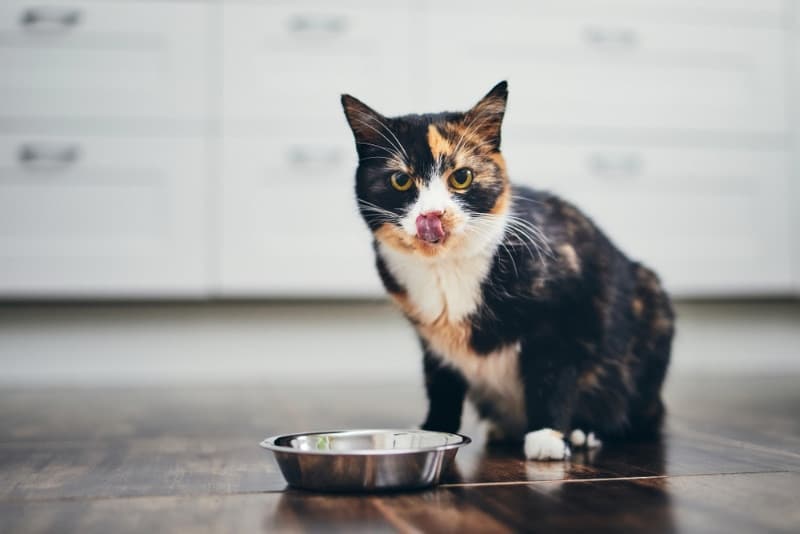Feeding your cat is simply a part of your daily routine, but did you know that some of us maybe aren’t doing it in the best way possible? If you’re confused about the different ways to feed a cat, you’re not alone.
Keep reading and we’ll highlight some tips you can do to healthily feed your cat and keep them in tip-top shape.
Finding the Right Cat Food
You can follow all the right steps to ensure your cat gets their food at the right time and the right way, but if you’re not feeding them the right food to begin with, you’re still going to run into problems. Don’t just trust the brand. Instead, consider taking a dive into nutritional information and learn about what to look for. Talk to your vet about what foods and amounts they recommend for your individual cat, as their health history might affect this.
For starters, cats need a kibble with at least 26 percent protein, but more than that is optimal, especially for kittens or mother cats. This ensures they get enough protein to sustain an active and healthy lifestyle. In fact, studies have shown that felines who are not eating food with a minimum of 40% protein can lose muscle mass over time 1. The type of protein is important as well. Protein from animal sources is best suited for a cat’s digestive system and tends to be a more complete protein than that from plant sources. This means that cats can meet all of their amino acid needs with an animal protein as compared to a plant source.
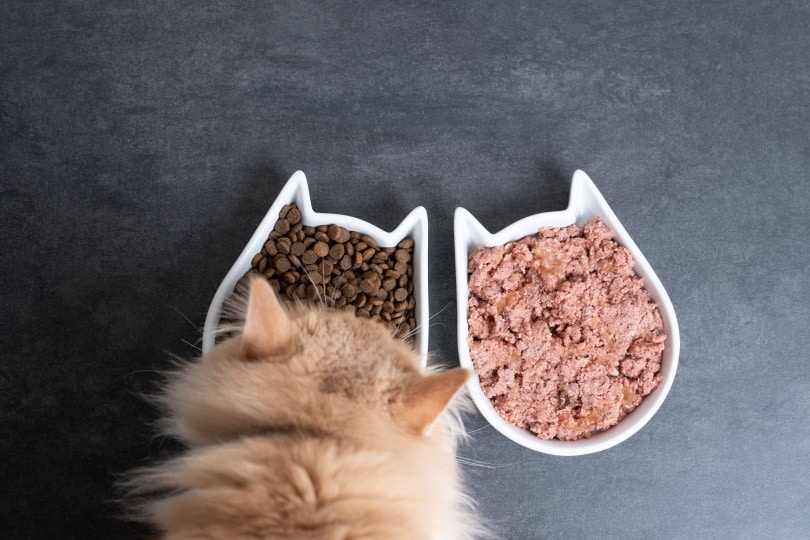
Next, look for fats and oils that come from animals. Cats can better utilize animal-based fats, and cats need these omega-3 and omega-6 fatty acids, as they provide energy, modulate inflammation, aid in fat-soluble vitamin absorption, affect their skin and coat health, and more. Ideally, fat should make up at least 9% of dry matter in cat food 2.
Finally, ensure the cat food has adequate fiber. For most cat foods this is about 5-6% fiber on a dry matter basis. Too much or too little can lead to various problems, such as loose stools or irregularity, so it’s important to stay within this range.
Come Up With a Feeding Schedule
While many cat owners choose to have a “free feed” method where they leave cat food out all the time, this can lead to overeating and makes it hard to figure out how much your cat is eating daily. Instead, it’s much better to schedule their meals out for them.
For most cats, feeding them once in the morning and once at night with about 12 hours between each feeding time is ideal. You can also feed them breakfast, lunch, and dinner, just ensure you adjust the portions appropriately.
Understanding How Cats Eat
When you’re coming up with a feeding schedule, it’s important to understand the evolutionary reasons that cats eat the way they do. In the wild, cats eat sporadic meals when they catch them and often don’t know when their next meal will come. While your domestic cat might know the food will always be there, some can’t help but gorge themselves like they’re at an all-you-can-eat buffet. Before long, these additional calories can lead to a cat putting on weight and potentially becoming obese, which can lead to numerous other health problems.
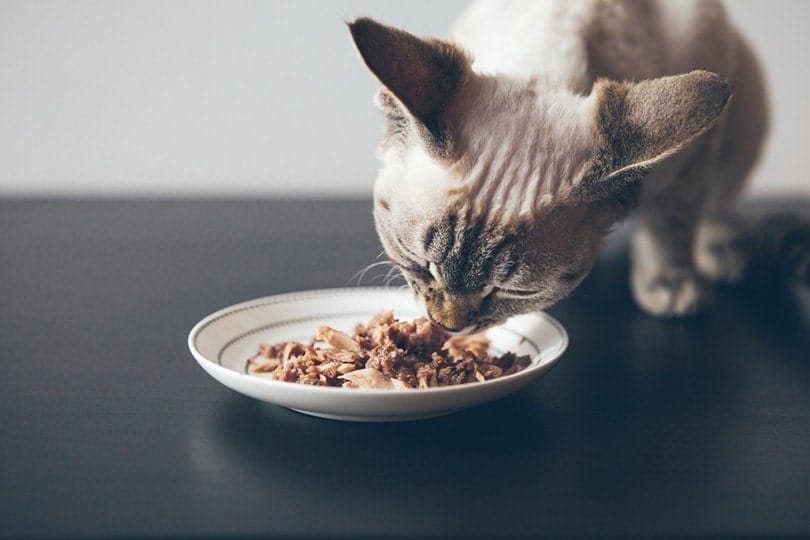
Feeding Your Cats
Now that you know a little bit more about the basics behind feeding your feline friends, it’s time to go through a quick routine on how to feed them the right way.
1. Clean the Bowls Daily
People often forget about the importance of cleanliness when it comes to pets, but just like how you shouldn’t eat off dirty dishes, neither should your cat. Take the time to clean out their food and water bowls every day. This helps prevent bacterial buildup and will keep your cat happy and healthy.
2. Measure Out the Meals
Some cats may eat far more than they should, and the only way to ensure they don’t eat too much while still getting the nutrients they need is to measure out each meal. Find out how much they should eat, then split that amount up by the number of meals you’re feeding them per day. If you’re unsure about how much to feed your cat, you can either refer to the feeding instructions on the food’s packaging or reach out to your vet.
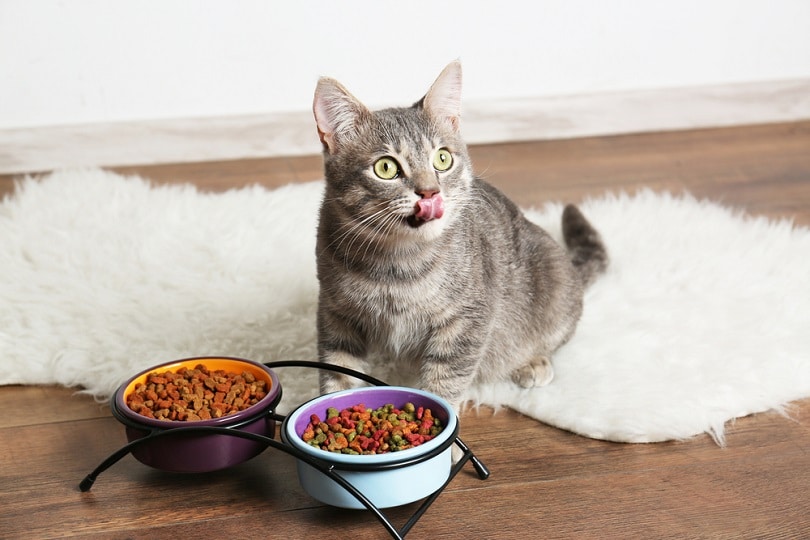
3. Activate Their Prey Drive
Some cats can be real couch potatoes, which is exactly why you should stimulate them both physically and mentally. Cats in the wild have to work for their food, and if you have an indoor cat specifically, you can mimic this as much as possible to help them stay active. Before meals, think about ways that you can get your cat up and moving. You may choose to have them chase a toy mouse or put their food inside a puzzle feeder.
4. Put the Food Out at the Same Feeding Times Every Day
Once you’ve selected your feeding times, stick to them. When the time comes, put out their food until they’re finished. Once you’ve done it this way for a few weeks, most cats become so well adjusted that they might start staring you down once dinner time is close to remind you that they’re hungry.
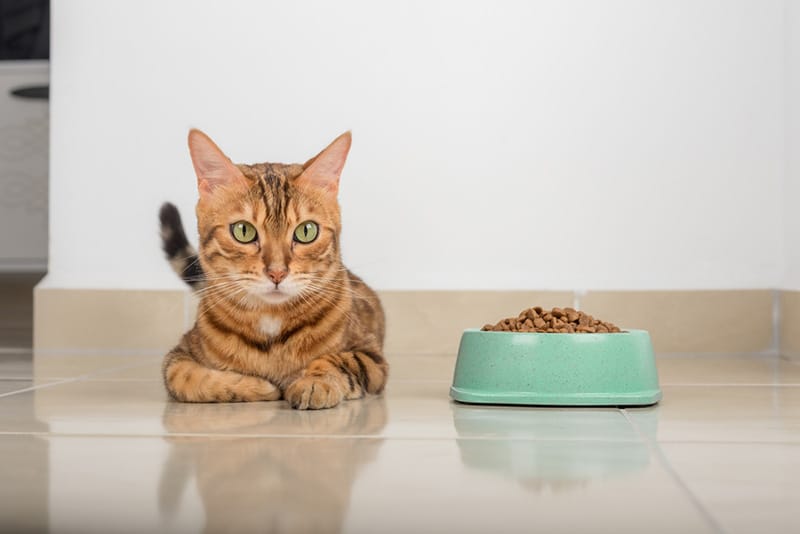
5. Pick the Bowls Back Up
Once your cat finishes eating, pick up their food bowl and put it away. Store any excess food and wash out the bowl before putting it back. Finally, always leave them a water bowl they can visit throughout the day whenever they’re thirsty.

Final Thoughts
Feeding your cat should be an enjoyable experience for both you and your kitty, and these tips may help you rest easy knowing that they’re getting all the nutrients they need! Just be ready for them to start seeking you out every mealtime because once they learn the schedule, they’re not going to let you forget it!
Featured Image Credit: Chalabala, Shutterstock

